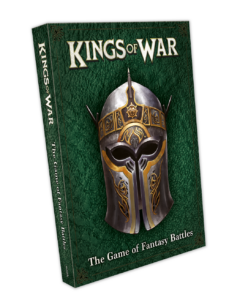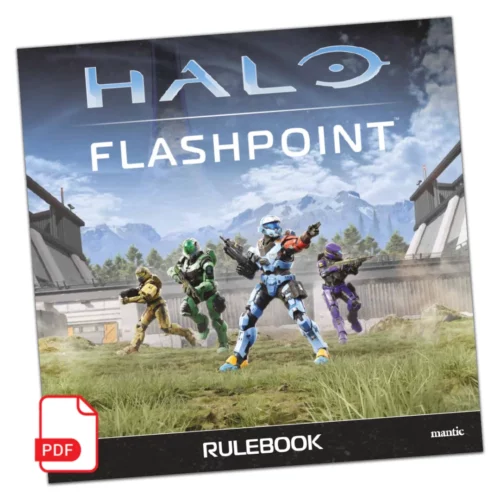Key Rules Changes in Kings of War: Third Edition
11th Sep 2019
Rob Burman
For today’s blog we’re handing over to Daniel ‘Darklord’ King,
Kings of War player extraordinaire and member of the Rules Committee. Dan is the
longest serving member of the RC and knows his flank charges from his rear combat
when it comes to the rules.
Alongside the other members of the RC, Dan and the playtest
team have been working tirelessly to improve the already wonderful Kings of War
and make it even better… if such a thing can even be conceived.
In today’s blog, Dan goes through some of the most significant
rules changes in Third Edition. Hold onto your butts…
ENGAGED/DISENGAGING
One of the most misunderstood rules in 2nd was the dreaded 1" bounce back, after failing to rout an enemy. But that confusion is all cleared up in Third Edition because now the units are simply left in place, Engaged.
If a unit begins its Turn Engaged with one or more Enemy units on a single facing only, it may make a free Withdraw move directly away from the unit(s) up to 1” before carrying out its normal Movement order.
If a unit begins its Turn Engaged with one or more Enemy units on a single facing only, it may make a free Withdraw move directly away from the unit(s) up to 1” before carrying out its normal Movement order.
This really speeds things up and gets rid of various messy
bits. The play testers have loved it and it makes such a huge difference. It also
adds new tactical options, as you can engage on multiple facings to prevent the
enemy from Disengaging.
But "WAIT!" you wail at your screen, threatening to flip any nearby tables, whether or not they have Kings of War miniatures on them! "It'll be really easy to put a mounted Army Standard into a flank and stop you Withdrawing! I HATE THIS GAME! I QUIT AND WILL IMMEDIATELY BURN ALL MY MINIATURES!" That’s not the case! Wipe the spit from your screen, put the lighter fluid away and I’ll explain why...
YIELDING/MIGHTY
Basic Heroes such as Army Standards and Wizards are now Yielding. This means several things. For one they cannot prevent a unit disengaging (as noted above, nice try!) Secondly, both you and your opponent can charge right through them (although you can’t end on top of them… that would be weird).
“Nooooooooooooooo!” Oh, it’s you again. “You have removed my incredibly cinematic moment when a tiny goblin armed with a flag on stick stops a massive dragon by aggressively waving a flag at it. I HATE THIS GAME! I QUIT AND WILL IMMEDIATELY SHOOT MY MINIATURES INTO SPACE NEVER TO BE SEEN AGAIN.”
" I HATE THIS GAME! I QUIT AND WILL IMMEDIATELY SHOOT MY MINIATURES INTO SPACE NEVER TO BE SEEN AGAIN.”
Actually, don’t worry. Disordered units cannot charge through
Yielding units. So, if you want to send that poor goblin standard bearer to
almost certain doom under the claws of the dragon, you can charge in with a
Yielding Hero and Disorder a unit. This will negate Fly and stop the dragon
charging straight through, however you can't just place a wizard in front of
some knights and block their charge. A Yielding unit has to prove it's a threat
by actually damaging the enemy… and not just standing there looking angry.
Mighty Heroes? Well they basically act like Heroes did in Second Edition. A Vampire Lord can indeed stop you Disengaging, if another unit hits another facing.
HILLS
We wanted Hills to be more of a focal point on the
battlefield but not to offer huge benefits to gunlines.
Hills now give a unit Thunderous Charge(1) if they charge
off them (not for Flyers though). Also, you have line of sight if your leader point
is on them (the hill still provides cover to units either side though).
They now play a much more tactical part of the game and can
make a huge difference if used well.
AURAS
We've added various fun and useful upgrades to a variety of
units and heroes, making each army more unique, in the form of Auras. Some
units either have Auras to begin with or can be upgraded with an Aura.
Auras give an effect to all units within 6" (including
the unit that has it). These can range from Elite to Thunderous Charge. It can
also affect a specific unit type.
For example, the Orc Morax Hero, grants an Aura of Thunderous Charge (1) to all units with the Berserker rule.
For example, the Orc Morax Hero, grants an Aura of Thunderous Charge (1) to all units with the Berserker rule.
“Oh great, I can combine all sorts of horrible combos with
multiple auras!” Unfortunately not – an aura doesn’t stack with the same order.
“I HATE THIS GAME. I QUIT…” Yes, yes, we get the idea. Moving on…
CHARGES
Units such as Dwarf Hordes really used to struggle to charge
anything to the sides, as charges in Second are measured from the centre point
(and 8" from the centre isn't far).
Now they are measured from the closest point on the front of
the unit. This simplifies it for any unit, but hordes especially are improved.
Infantry and Cavalry hordes now have way more threat projection, which makes
sense for a unit with such a presence on the battlefield.
And that's it for now! There are of course various other changes, but these are some of the core ones that I really feel make Third Edition excellent.
You can hear more of Dan's thoughts on Third Edition on the latest Four Foot Snake episode, available here.

 GBP
GBP  EUR
EUR  USD
USD 
